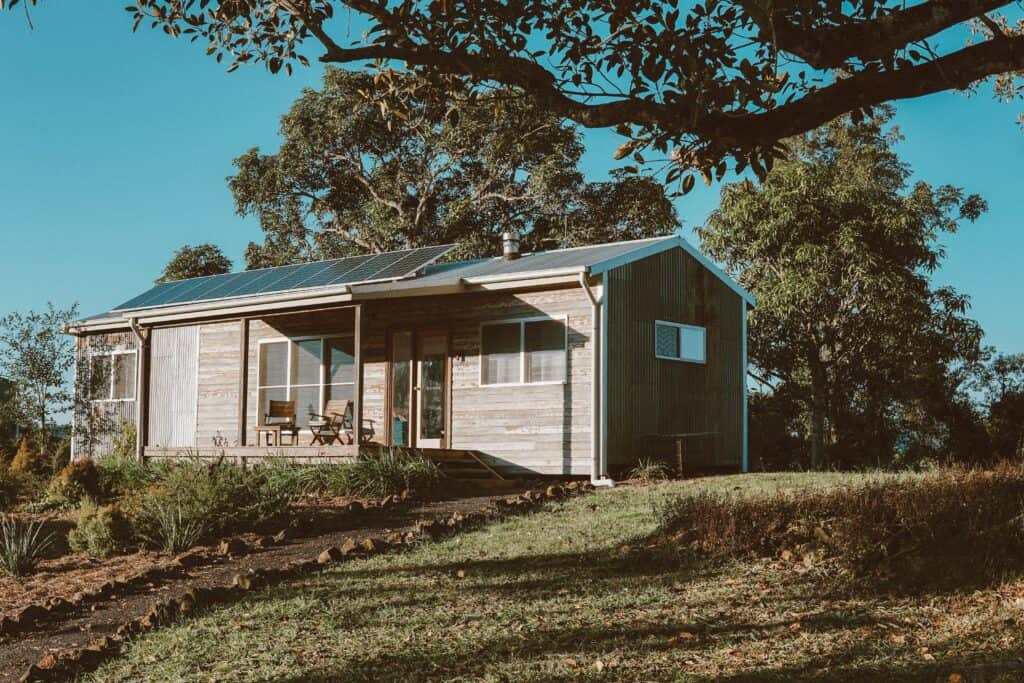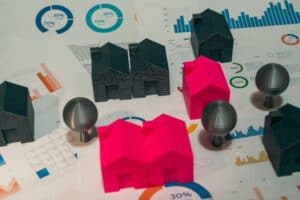
Best Property Investment Courses in the UK
Discover top-rated UK property investment events, bootcamps, and mentors, including Martin Roberts, Stuart and Scarlette

Sustainability has become more than a buzzword in 2024 – people are increasingly concerned about the effect of our actions on the planet, and the potential consequences of climate change are more visible than ever. The building and construction sector is the largest producer of greenhouse gases and is responsible for 37% of global emissions. Consumers are more educated on environmental issues and there is an increased demand for sustainability in all developments – but what does it mean in the context of housing investments? Join me as I look into the rise of sustainable housing developments and what it means for property investors.
Table of Contents
ToggleSustainable homes are designed to have a lower carbon footprint than traditional building methods. Sustainable housing often involves using more renewable and sustainable building materials, incorporating efficient plumbing, heating and cooling systems, smart home systems and more eco-friendly choices. As the need for housing rises along with concerns about the effect of development on the environment, it is more important than ever for developers and investors to focus on sustainability.
There are several popular key features of sustainable homes – an eco-friendly house can include any or all of these:
Sustainable building materials conserve natural resources, reduce waste, incorporate recycled materials, and require less energy to source and create. Some popular sustainable house-building materials include hempcrete, a strong and lightweight alternative to concrete, recycled steel, glass and reclaimed wood, aerated concrete, bamboo, straw bales and cork.
A lot of energy is wasted on heating and cooling homes, so effective insulation can cut carbon emissions significantly. Windows with improved capacity for insulation and eco-friendly, breathable loft insulation materials such as sheep’s wool and cork are sustainable ways of providing insulation.
Technology and features that conserve water are a good way of reducing a home’s energy usage, from low-flow taps, toilets and shower heads to water-efficient appliances like washing machines and dishwashers, and even rainwater collection systems that can be used for watering the garden or washing the car.
Homes built with renewable energy sources such as solar panels, biomass boilers and heat pumps offer sustainable energy generation that can reduce energy bills too.
The shape and layout of a home can impact its efficiency – building a home designed to retain heat or stay cool depending on the season can reduce energy usage. Smart window placement and open floor plans can help avoid heat loss and facilitate good air circulation. Nearby trees can provide shade in summer and block cold winds in winter.
A smart thermostat, lighting and appliances can conserve energy by turning off automatically when they are not needed, making the home more efficient and cheaper to run.
While sustainable housing seems like an obvious choice, there are numerous benefits to transitional housing that we must recognise – here is a comparative analysis of both.
A sustainable home can cost more in materials – standard home-building supplies are chosen not just for tradition’s sake but for their availability and relative affordability. While sustainable building materials can save money in the long run through efficiency and their ability to command a higher sale price, the upfront costs of building a sustainable home will be higher.
The main appeal of sustainable housing is its lower environmental impact. Sustainable housing practices can reduce the carbon emissions of housing developments, which will become more important in the future due to tighter regulations, sustainability requirements, and public concerns about climate change. There will always be a place for traditional homes, especially when existing ones can be renovated to bring them in line with energy efficiency targets. Renovating an older house will almost always have a lower carbon footprint than building an entirely new one.
Sustainable homes will be in even higher demand in the future thanks to growing climate concerns and housing regulations. Some sustainable building materials may require more maintenance, which can impact long-term values, but traditional homes could face similar maintenance requirements, especially those that need modernisation.
Here are some of the benefits you can enjoy from investing in sustainable housing:
A sustainable property is very appealing to potential tenants, meaning you can expect higher rental yields.
Likewise, if you are investing in property to sell on at a higher value, sustainable houses can command a higher sale price.
Being able to save money on utility bills is a big draw for potential homeowners and tenants, so this could make a sustainable house even more attractive.
Consumers want products to be as sustainable and eco-conscious as possible as they are more informed about the effects of carbon emissions and climate change, so market demand is shifting towards sustainable housing more than ever.
No one likes the idea of living in an inefficient home – having a high EPC rating can increase market demand for your property and attract more tenants or buyers.
Many housing developers, housing associations and councils have incorporated sustainability into their housing development plans for the next five years, highlighting a heightened public awareness and concern for the environment. The Paris Agreement in 2025 outlined the need for all greenhouse gas emissions to reach Net Zero by 2050, kickstarting a range of worldwide sustainability goals. The UK government became the first major economy in the world to legislate a zero net emissions target. All new developments in the UK must achieve Biodiversity Net Gain as of this year, and the government has plans to raise building efficiency targets and reduce energy usage on new builds and existing housing stock which would be retrofitted to meet these goals.
Recent research indicates a higher interest in new builds and a decline in interest for period properties over the past decade, and 80% of developers saw sustainable housing as more important to buyers. Consumers are looking for alternative energy sources and more efficient homes thanks to rising energy bills and the ongoing cost of living crisis. All of this will contribute to making sustainability a key market trend in the property investment market and others for 2024 and beyond.
Investing in sustainable housing can mean investing in energy-efficient new builds made from sustainable materials, or retrofitting existing properties to be more energy efficient.
Here are some key considerations for investors:
Are you interested in finding out more about property investment in the UK? Join me, Liam J Ryan, and other property investment gurus at one of Assets For Life’s FREE property investment events – click here to find out more or sign up.
You May Also Be Interested In...

Best Property Investment Courses in the UK
Discover top-rated UK property investment events, bootcamps, and mentors, including Martin Roberts, Stuart and Scarlette

How to Make a Million Pounds from Property Investing
Discover how to earn £1 million through UK property investing with practical strategies and expert

How To Grow A Property Portfolio – Free Online Training
Grow your UK property portfolio from scratch with expert tips, creative strategies and free online
Featured Property Investment Events & Courses
The Property Deal Packaging Summit
The Property Millionaire Bootcamp
The Serviced Accommodation Bootcamp
Assets For Life LTD is a company incorporated in England and Wales with registered number 09935286 and registered offices at Assets for Life Ltd, Suite 105, Waterhouse Business Centre, 2 Cromar Way, Chelmsford, Essex, England, CM1 2QE, United Kingdom.
Assets For Life LTD is registered with the Information Commissioner’s Office, with registration number ZA280607
COPYRIGHT © 2024 ASSETS FOR LIFE, ALL RIGHTS RESERVED. WEBSITE BY AMPLIFY MARKETING
Want to learn the 11 steps to survive in a volatile market? Click here to get your FREE guide!